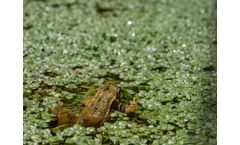Marine Algae Articles & Analysis
8 articles found
How Algae Produce Oxygen Algae, like land plants, contain chloroplasts with chlorophyll pigments that absorb sunlight. Chloroplasts are found within plant cells and algal cells, and are responsible for photosynthesis. Algae, like green plants, use chlorophyll to capture sunlight and produce oxygen. ...
Sargassum swartzii, marine macro brown alga, showed a high malachite green (MG) biosorption capacity in batch mode of operation. ...
The so-called “blue revolution” has proven in recent years that growing fish for human consumption and relieving stress on marine resources is possible. It’s no surprise that communities all over the world are demonstrating the global shift to sustainable and integrative sea farming — from small fishing villages in Bangladesh, where families use fish waste ...
ByEnsia
The toxicity of phenol and 13 chlorinated phenols to the marine alga Dunaliella tertiolecta is presented for the first time. The newly generated marine algal toxicity data was found to correlate strongly with the widely used hydrophobicity parameter—the logarithm of the n‐octanol–water partition coefficient (log KOW). Interspecies relationships ...
Salmon farming is a multi-billion dollar global industry facing considerable difficulties posed by growing pressure from environmental regulatory bodies. Because marine organisms grow on and “foul” synthetic nets, oxygen available to fish is reduced and infectious diseases and parasites can spread among the fish. ...
In this work, biosorption of Cr(III) by the marine brown algae Sargassum muticum was studied in a batch system. Kinetics and equilibrium experiments were conducted at different pH. ...
Abstract A new, fully-automated, closed-chamber system was developed for measuring photosynthetic activity in aquatic plants, algae, or corals during immersion. The performance of this system, which monitors oxygen exchange, was evaluated both in the laboratory and in situ under natural conditions using the seaweed Laminaria dtgitata. ...
The effects of bed height and flow rate on continuous mercury removal were studied using BDST and Thomas models respectively.Keywords: biosorption, marine algae, mercury removal, isotherm, fixed column studies, Sargassum tenerrimum, biomass, adsorption, bed height, flow rate, water ...







